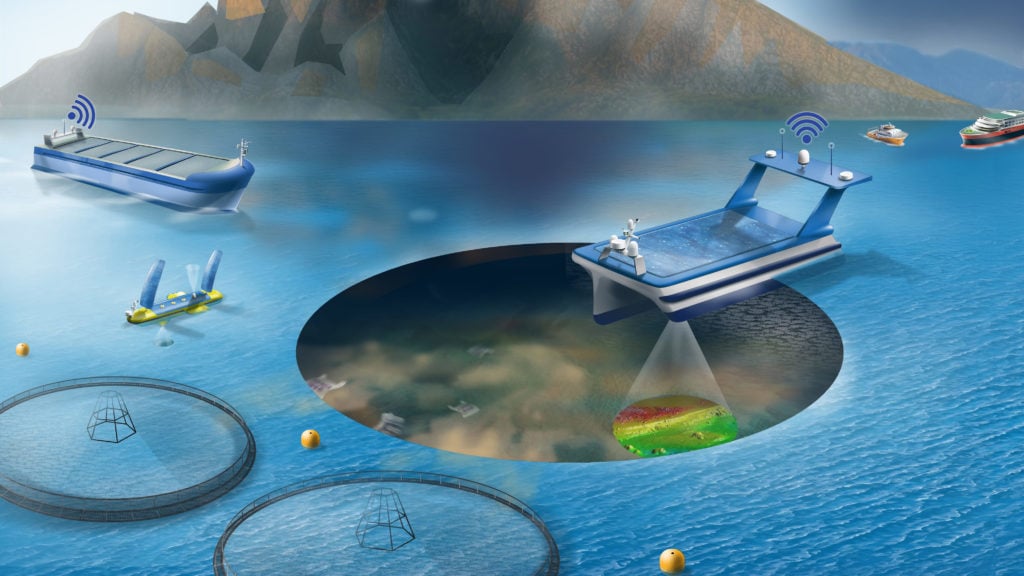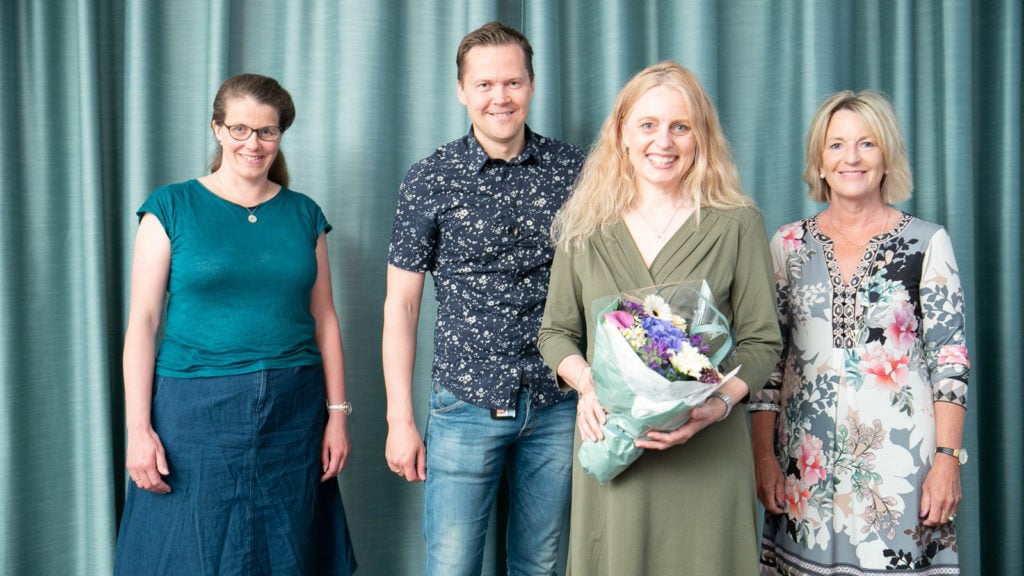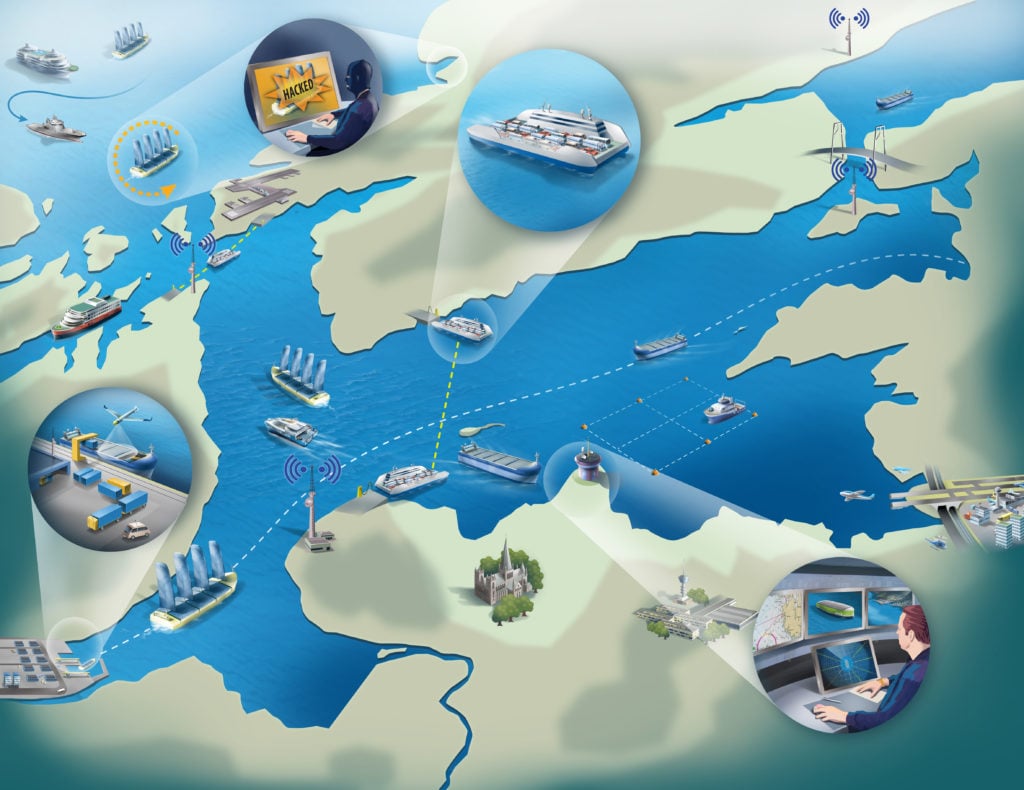SFI Autoship: New center for autonomous ships in Trondheim
The Norwegian Research Council has allocated NOK 2 billion to new centers for research-driven...

SFI Autoship is a new 8-years research-based innovation center that is headed by NTNU. During the coming years they will contribute to Norwegian players taking a leading role in the development of autonomous ships for safe and sustainable operations.
– It was a long process which started all the way back in late 2016, but in June 2020 we finally got the news that NTNU would be the host for SFI Autoship, says Professor Mary Ann Lundteigen.
She is the director of SFI Autoship.
The purpose of an SFI centers is to develop expertise in fields of importance for innovation and value creation. Through long-term research conducted in close collaboration between research-performing companies and prominent research groups, the SFI centers are to enhance technology transfer, internationalization, and researcher training. The scientific merit of the research must be of high international caliber. It’s the Research Council of Norway that grants and finance the SFI-centers.
– What sets the SFI-centers apart from other research projects, is the amount of funding, and the length of the project, says Lundteigen.
The SFI Autoship has a budget of 240 MNOK over 8 years, with funding coming from the Research Council and the Centre partners.
– This gives us the opportunity to direct the resources over a longer period to solve some of the more complex challenges associated with autonomous transport at sea, says Lundteigen.
Autonomy means systems that can perceive what is happening, and then decide what to do.
– In the car industry, which has advanced farthest and used most resources in developing autonomous systems, they operate with six levels of autonomy, Morten Breivik explains.
He is the Head of Department of Engineering Cybernetics at NTNU, the host department at NTNU for SFI AutoShip. To explain the levels of autonomy he uses well knowns examples from the automotive sector.
– Level zero means no automation. Level one is for example driver assistance, such as cruise control. Level two is partial automation, where both speed and steering has been automated, used for example in automatic parking, says Breivik.
– For levels zero to two, a human always monitors the driving environment.Level three is called conditional automation. On this level, the vehicle can perform most driving tasks, but human intervention is still required if something goes wrong. It’s autonomy up to this level we see today, for example with Tesla cars.
– Level four we call high automation. At this level, the vehicle performs all driving tasks for a specific operation like for example urban driving. Human override is still possible, Breivik continues.
He hopes that within the eight years of SFI AutoShip, we will see more of level four autonomy for different types of ship operations. Lundteigen agrees and confirms that this corresponds well with the ambition level among the SFI partners.
– SFI AutoShip will work to solve problems related to level four. We also aim at developing technologies that can realize full autonomy for some selected applications, says Lundteigen.
Full autonomy is what is referred to as level 5, where a vehicle performs all driving task under all conditions, without the need for human attention.
– Level five is for some the ultimate dream, but we are not there yet, and maybe never will reach it. Besides the technological challenges to reach this level, it may also be a question whether investments into such solutions are sustainable.

In the next eight years, SFI Autoship will direct the research to several disciplines of autonomy and autonomous ships.
– To get to the point we want, we need to look at the whole picture, not just one part, says Lundteigen.
Therefore SFI Autoship has created seven work packages within autonomy and autonomous ships that they will concentrate their research around for the next eight years.
– Five of the work packages cover research in autonomy and control, digital infrastructure, remote control centers and human factors, safety and assurance and sustainable operations, says Breivik.
– The sixth work package, which we call the heart of SFI AutoShip, is where we define research needs, collect data, and test the results generated from the other five work packages. We have identified four main use cases, covering deep sea bulk shipping, short sea container shipping, ferries, and offshore support operations, Lundteigen explains.
– The seventh work package focus on the utilization and transfer of the research outcomes into development of new products, services, procedures, guidelines, standards, and technology together with the partners, Lundteigen continues.
To give one example of a challenge where industry calls for more research, Lundteigen points to situational awareness. This is a topic that is important for several of the work packages.
– This concerns the ship’s and the control centers’ ability to interpret and describe the surroundings of the ship, including tracking of other objects in the area. Here, we have many challenges to solve – both technologically but also concerning how people can perceive the information from advanced sensor systems, says Lundteigen.
– This calls for better and improved sensor technologies, higher capacities in digital infrastructure for communication, and better ways to set up and organize remote operation centers so that all the information becomes available where it is needed. Situational awareness is also vital for ensuring that the risk of accidents is as low as possible, and that early incidents are acted upon in due time, Lundteigen continues.
– Trying to develop safe and secure autonomous solutions is extremely challenging, and something that the car industry spends billions of dollars on every year. Hence, we must work smart and pragmatic to achieve good solutions suitable for the maritime business, Breivik adds.
SFI Autoship is an interdisciplinary center.
– In total we have 23 partners including NTNU, covering segments like ship operators, shipping companies, suppliers of ship equipment and technology, ship classification and insurance, authorities, public infrastructure owners, and research. Research partners are NTNU, SINTEF, UiO, and IFE. NTNU, SINTEF and IFE bring in research competence in many areas related to technologies and operation of autonomous ships and operations, while UiO contributes with expertise in maritime law. Together with the industry and public partners in the Center, we want to ensure that our research gives relevant innovations, says Lundteigen.
Among the partners are the Norwegian Maritime Directorate and the Norwegian Coastal Administration.
– It’s important that the authorities are a part of this project. When the technology develops, the laws of traffic at sea also needs to develop. This applies both to national and international laws for traffic at sea. We need to ensure that the technology and laws work together, and they have to be developed at the same time, says Lundteigen.
Another partner is the insurance company Gard.
– If companies want to transport goods or people with autonomous vessels, the vessels need to be insured. Therefore, the insurance companies need to be part of the development and part of projects like this, says Lundteigen, to better understand the risks associated with this type of transportation.
– Autonomous ships is something entirely new to the industry, so it is important that we have many partners, including the insurance industry, says Breivik.
– With partners like Equinor, Torghatten, G2 Ocean, Grieg Star, NCL, Trondheim Havn, and Trondheim Municipality, we will explore further developments of business cases for autonomous ships which are safe as well as sustainable. In this effort, our industry partners on ship classification, DNV-GL, and suppliers of ship equipment and related technologies, Kongsberg Maritime, Maritime Robotics, Massterly, Telia, Embron, MacGregor and Idletechs, will provide important contributions to the research and innovations. Some of these partners are already involved in testing autonomous solutions for cargo transport, port operations, and ferries, says Lundteigen.
Both Lundteigen and Breivik believe that more and more people see the advantages of autonomy and autonomous shipping.
– Many countries have closed their borders due to the Covid 19 pandemic. At the same time, it is vital to secure the transportation of goods between continents, says Lundteigen.
– With autonomous vessels it would be possible to ensure transportation of goods, even during a pandemic. At the same time, autonomous ships would ensure that ship crew would not get stuck at sea due to a pandemic, Breivik says.

Most of the autonomous vessels we see today, are at level three. But Lundteigen and Breivik believe that level four is within reach.
– We will probably see several examples of vessels at level four in five to ten years, says Breivik.
– We must go about this in a segmented manner. Some applications will reach this level sooner than others. This has to do with both different technological complexities and different regulations for local, regional, and global operations, he adds.
– Where are we in 50 years?
– I believe that we in 50 years will find autonomous ships as an integral part of maritime transportation, and for some of these we may even see that level 5 has been reached. I also believe that autonomous ship transportation will be fully integrated with other means of transportation on land and in air, with common logistic systems optimizing their utilization. It is realistic to foresee that we will also have totally new business cases for autonomous shipping in 50 years, which we cannot foresee today. Some of these may stem from new demands from society while other can be because we have solved the limitations of existing technologies and solutions, says Lundteigen.
– How will autonomy influence people in their everyday life in the future?
– Norway is a country with a long coast. Autonomous vessels might in the future make it easier for people to live in remote parts of the country. For example, it might be possible for people that live on islands to use autonomous vessels to travel when they want, instead of scheduled traffic, says Lundteigen. Autonomous ships can contribute with new ways to bring products along the coast and make it possible to develop new jobs and industries in all areas that can be connected to sea and waters, says Lundteigen.
– I believe that we will see the first level four for autonomous vessels for passenger transport in urban areas, since the complexity is lower than most other maritime operations, says Breivik. Here, NTNU has new and existing test infrastructures with MilliAmpere 1 and 2.
SFI-Autoship is now at the beginning of its eight-year long journey.
– It’s been an intense start. As soon as we got the news that we were awarded this center, we started to plan the activities in more detail, says Lundteigen.
This has involved announcing new PhD and researcher (postdoc) positions. During the next eight years, SFI Autoship is going to educate many masters students and PhD-candidates.
– This year we will hire several PhD-candidates, so the level of activity will increase when they arrive, says Lundteigen.
All students educated through the centre will bring new competence and value for the Norwegian maritime industry.
The Norwegian Research Council has allocated NOK 2 billion to new centers for research-driven...
NTNU and Zeabuz are looking for a game developer to work on the pioneering Gemini 3D simulation...
Norway and seven other leading flag, coastal and port authorities has...